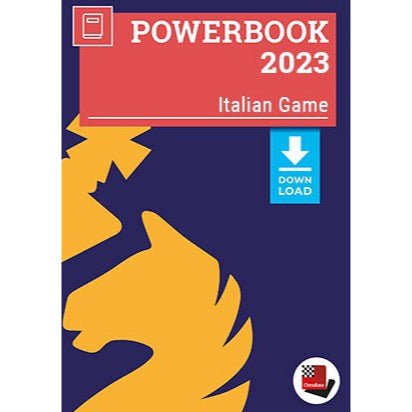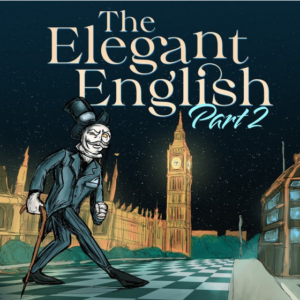Trompowsky Attack – Top-Level Repertoire for White GM Nikita Meshkovs Modern Chess
Original price was: $ 100.$ 3Current price is: $ 3.
OFF - 97%9998 in stock

Description
Reviews (1)
Description
In this course, full of new ideas and concepts, GM Meshkovs shows how dangerous the Trompowsky Attack can be at any level. As readers will witness, Trompowsky provides you with a variety of less-explored positions where creativity and understanding are tremendously important. After studying the material, you will be ready to play the Trompowsky Attack at any level.
The course consists of 11 theoretical chapters, 15 interactive test positions, a Memory Booster, and a Video Version (5h and 48min).
INTRODUCTION BY GM NIKITA MESHKOVS
1.d4 Nf6 2.Bg5

The Trompowsky Attack is a unique opening, combining a wide range of early game paths and the ability to choose the game pace for both players. Unlike other openings in Trompowsky, the fight starts in the early game. White targets the knight on move two with the idea of giving up the bishop for the knight. This is the moment when positional/tactical battle is about to start. White’s strategy is to trade on -f6, destroying the opponent’s pawn structure. White will try to capitalize on it in the later phases of the game. In some lines, the dark-squared bishop pins the knight and limits Black’s activity. The most popular and ambitious reaction from Black is to jump with a knight to the center.
Against 2…Ne4, my suggestion is 3.h4 which is the so-called Raptor Variation.

In this position, Black usually undermines the centre with 3…c5. In case of 3…d5, we’re bringing the second queenside minor piece into the game with 4.Nd2 Nxd2 5.Qd2 and having a positional fight where White has slightly better development. We will examine the details of this setup in Chapter 4.
Against 3…c5, I explored a very rare line here and recommend it in my course – 4.Nd2.

This move leads to a very sharp fight and almost a new position already on move 4! I believe it is a great trend nowadays to offbeat your opponent from theoretical lines as early as possible. Black is forced to make decisions over the board and has several choices to proceed here. A key idea is to answer 4…Nxg5 with 5.d5!N leaving the knight to hang in the air for a while. There are several ways for Black to give up the knight in a good way, keeping extra pawn. However, White still can pretend to have compensation. We will examine this line in Chapter 1.
Another direction is 4…Nxd2 5.Bxd2N this move also hasn’t happened in practice yet. The main point is that after 5…cxd4 6.c3 dxc3 7.Bxc3 we have a great potential for compensation, as White has a powerful bishop and good pressure all along the dark squares. This resembles a bit of Morra gambit in a Sicilian Defense. We will examine this line in Chapter 2.
Finally, Black can support the knight in the center with a solid move 4…d5. In this case, I recommend going for an immediate trade 5.Nxe4 dxe4 followed by 6.dxc5. Here we get a slightly imbalanced position which happened in practice in less than 20 games! We will examine this line in Chapter 3.
Black can play in the spirit of the KID with 2…g6 but I find this move slightly suspicious. This line is very similar to 4…c6 where Black wasted tempo for not the most necessary fianchetto move. The point is that g7-square is a bad placement for a dark-squared bishop with no bright perspectives in the future. A much better place is d6. After trades 3.Bxf6 exf6 4.e3 d5 I recommend going for the direct contact by playing 5.c4 dxc4 Bxc4.

After and now comes a big question where to develop the dark-squared bishop? There are two options: attacking and defensive. The best spot for the bishop is on d6, despite playing g7-g6 earlier. We will examine this type of positions in Chapter 5.
Probably the most solid reply is to obtain control over the center by playing 2…d5 3.Bxf6 exf6

Black opens up the e-file for their major pieces and strengthens his pawn structure. We continue with 4.e3. In this line, we will have a half-contactless fight because there is often no direct contact and White needs to know how to shorten the distance wisely. This is the first critical position because the ball is on the opponent’s side and it’s essential to understand different set-ups for Black. There are a bunch of moves, but all in all, there are three systems for Black. That’s the reason in many cases the game may transpose from one to another line. We will examine this type of positions in Chapter 6.
Another very important direction is 2…d5 3.Bxf6 gxf6

The g-file becomes semi-open. That means in the case of a short castle, the king always will be vulnerable. On the other hand, if Black wants to make a long castle, they have to bring all the minor pieces into the game and think carefully about their pawn moves in the centre. In my opinion, the best approach in this position is starting by developing the knight with 4.Nf3. With this move, White takes control over e5 and prevents the …e7-e5 idea. We’re reaching a strategically interesting position where Black has a variety of options. We will examine this type of position in Chapter 7.
Another important position for our repertoire arises after 2…e6 3.e4 h6 4.Bxf6 Qxf6 5.Nc3

White is planning to follow by Qd2 and continue to play for a space advantage by occupying space on the kingside with f2-f4, keeping the flexibility of making long or short castles. Black has two main set-ups here and we’re going to examine them in Chapters 8 & 9.
Another provocative approach for Black is to undermine the center with a direct 2…c5. The critical line here goes 3.d5 Qb6 4.Nc3 Qxb2 5.Bd2!

White creates the threat of Ra1-b1 followed by Nc3-b5 going to c7 with a fork. White has a huge initiative in this position. This line is examined in Chapter 10.
Other moves, such as 2…c6, 2…b6, 2…d6, and 2…h6 are covered in the last Chapter 11.
Reviews (1)
1 review for Trompowsky Attack – Top-Level Repertoire for White GM Nikita Meshkovs Modern Chess
Leave a Reply











Mateo (verified owner) –
For taking all the fun out of my chess games. I never thought anybody would be cruel enough to make winning so easy that chess has become boring.